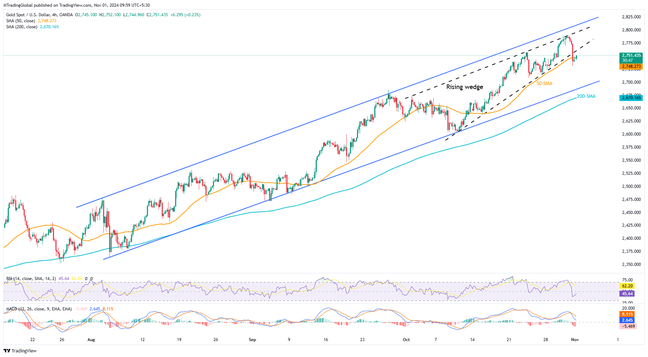Gold is stabilizing after its largest daily decline in 15 weeks, as traders await Friday's US Nonfarm Payrolls (NFP) report. In doing so, the precious metal bounces back above the 50-SMA but struggles to reclaim its previous upward trend, signaled by a three-week-old rising wedge. Still, it remains within a bullish channel established since early August.
Bulls need conviction to retake control
Even with gold's recent bounce and its position within a multi-day bullish channel, Thursday’s confirmation of a rising wedge bearish chart formation, combined with bearish MACD signals and a lack of oversold RSI, raises concerns for buyers.
Key technical levels to watch
Gold buyers focus on the rising wedge's bottom near $2,762 to regain control. If they succeed, the next targets will be the wedge's top at around $2,796 and the bullish channel’s upper line at about $2,810. A firm move above $2,810 could lead to the bullion’s gradual rise toward $2,900 and potentially $3,000.
On the other hand, Gold sellers are looking at Thursday’s low of $2,731, with the previous weekly low of around $2,708 in their sights. Key levels for bears include the bullish channel bottom and the 200-SMA near $2,687 and $2,670, respectively. If gold drops below $2,670, it may be set for a decline toward the rising wedge target of $2,570.
Bulls in control, but sellers seek opportunities
The recent bearish chart pattern offers sellers a chance for short-term gains, especially if the US employment report impacts gold prices. However, buyers are expected to maintain their hold on the market.
Join us on FB and Twitter to stay updated on the latest market events.

